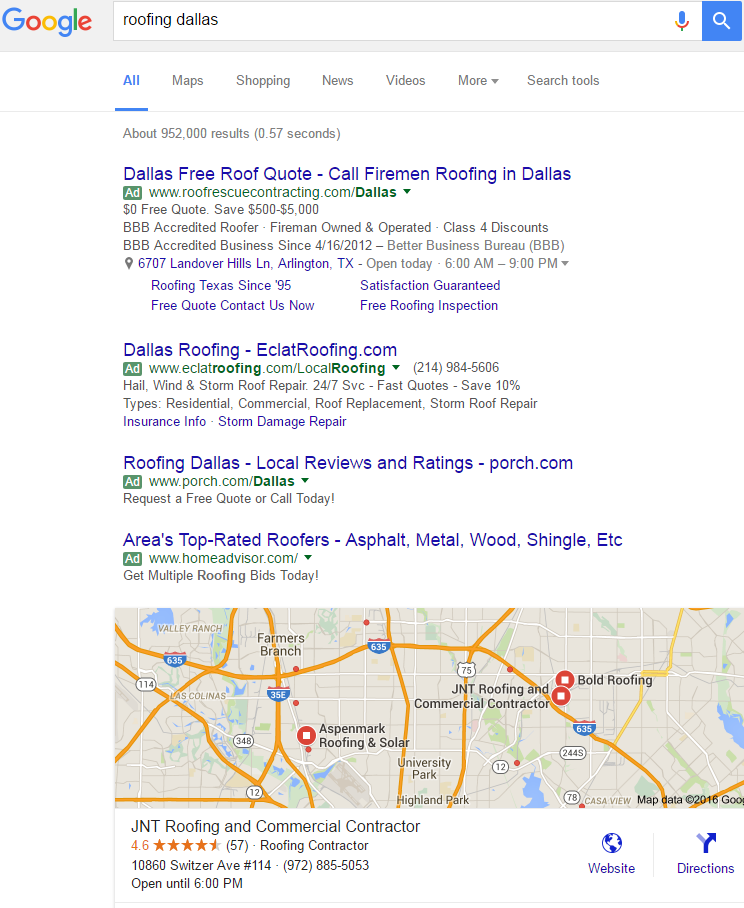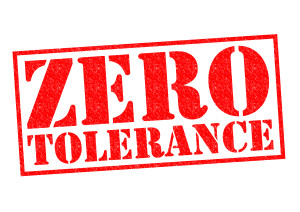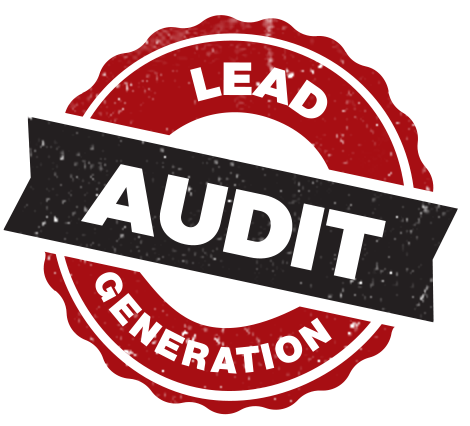Posted by Rich Harshaw on March 16, 2017.
Topics: Advertising,
Contractor Marketing,
Contractor Seminars,
Identity,
Internet Marketing,
Make The Jump,
Online Reputation Management,
Pay Per Click,
PPC,
Price Conditioning,
Radio,
Rich Harshaw Seminars,
SEO,
Web Marketing,
Websites.

If you’re serious about getting to $10MM, you’re going to have to Master internet marketing.
That’s Master, with a capital M.
Like Steph Curry is the Master of the 3-point shot.
But honestly, most remodelers are more like a fat kid hoisting 3’s in his driveway. They’re just not very good at internet marketing
But Mastery is non-negotiable—if you want to get to $10MM. Here’s why:
1. Every lead you ever get from any source is going to check out your website. All of them. And if you’re not careful, your website will scare them off—without you even knowing it.
2. There are a TON of prospects wandering around the internet just waiting to be captured by you… or somebody else who is better at doing so.
To learn more about the Make The Jump Event click here.
In terms of websites: yours MUST be fresh, clean, and current. It has to turn LOOKERS into BUYERS. You have to build a case for why you’re different and better than your competitors. You have to show them plenty of evidence. You have to be convincing.
Especially considering your prices are going to be 50% to 150% higher than your competitors.
Fat kid in the driveway isn’t going to cut it.
Want to see what your website SHOULD look like? Click here, here, here, or here.
If you want to learn more about what goes into a great website, watch this webinar.
Now let’s shift gears and talk about SEO & PPC.
These are two of the least understood weapons in the remodeler’s toolkits—because sellers of SEO & PPC have been ripping remodelers off for well over a decade now.
Everyone has stories of failure and doom. And most of them are true. You do have to be careful when wading into these waters.
But flushing SEO & PPC down the toilet because some company ripped you off makes no more sense than homeowners flushing remodeling down the toilet because contractors have a bad reputation.
Get over it—there are hundreds and hundreds of leads just WAITING to be captured.
Obviously, you have to have a killer website or else the prospects that land on your site are going to draw the natural conclusion that you suck. Airball.
But beyond that, what are the rules? How does it work? What should you do?
For SEO, it’s simple. You have to add TONS and TONS and TONS of relevant, interesting, and well-written content and add it to your site.
Every. Single. Month.
Content can mean articles, blog posts, videos, geographic-specific pages, product-specific pages, case studies, project photos, online reviews—just to name a few.
Google sees all that stuff and rates you higher than your competitors who don’t put in the time and effort to do so. It’s just that simple.
But still, most SEO companies try to shortcut the process. The key words above were “relevant, interesting, and well-written.” Most companies settle for poorly written, irrelevant, and uninteresting.
Fat kid hoisting 3’s in the driveway.
And they wonder why Google keeps crucifying them.
SEO to the level you need to get to $10MM is going to cost you about $1,200 to $3,000 a month—and it strictly depends on how aggressive and good your competitors are (at SEO).
Most of our clients are on a $1,200 a month plan and are riding first page (and many #1) rankings… and rising. A few of our clients pay double that because they are in super competitive markets, or they have a few really bad reviews that we have to bury. (note: bad reviews does NOT necessarily mean they are a bad company. It often means that some idiot jack-wagon has a vendetta against them. You also need to actively manage your online reputation and reviews).
Not doing SEO is not an option. It’s 100% mandatory.
But what about PPC?
To be a $10MM company, you’re going to want to Master this one as well.
To learn more about the Make The Jump Event click here.
Google recently changed the way its search results look. The top FOUR spots are now ads, then a map, and then the “organic” (SEO) results.
Take a look:

Let me give you the short course on PPC, then give you some links to read more if you want.
PPC providers are worse than the SEO guys. There are a TON of them that have ZERO clue what they are doing. Most of them are simply taking your money and putting it on an online automated bidding platform that takes a huge chunk of the money you paid to use. You never know this except when you get crappy results. I want to emphasize—they literally have no idea what they are doing. None.
Fat kid in the driveway trying to shoot a medicine ball.
The few that don’t use an automated system have SOME clue, but almost always are generating fewer leads than you should be getting.
To get to $10MM, you have to find a great PPC company, then once you’re satisfied they’re good, SPEND AS MUCH MONEY AS POSSIBLE WITH THEM!
Why? Because every dollar they spend is going to bring you leads.
But not just leads. Leads from the people who are actively trying to find somebody to buy from!!!!
Once you have a great website and you’ve Mastered SEO & PPC, you’re ready to talk about MEDIA advertising. Radio and TV.
And radio and TV is what is going to make you a millionaire.
Next post, I’ll explain how.
Happy Marketing! For info about the upcoming 2-day seminar, click here.
P.S. Here’s a great webinar I did on SEO & PPC called “The No BS Webinar On SEO & PPC”

Save
Save
Save
Save
Save
Save
Posted by Rich Harshaw on March 15, 2017.
Topics: Advertising,
Contractor Marketing,
Contractor Seminars,
Make The Jump,
Marketing,
Media Buying,
Pay Per Click,
PPC,
Rich Harshaw Seminars,
SEO,
Web Marketing.

Early in my career, I thought I would perform a noble service for my clients by helping them minimize their advertising expenses.
Specifically, I was consulting with an $8MM sunroom and window company in Savannah, GA, and helping them manage a $100,000 a month advertising budget.
About 2 or 3 months into the relationship, I nipped and tucked different parts of the budget, and got it down to about $85,000. I was excited to have “saved” my client a significant amount of money.
At the end of the month, as I reviewed the results with my client, he saw the reduced budget number and went berserk.
And not in a good way.
“I have to spend the money to buy my leads!” he chastened me. “Every dollar you don’t spend means fewer leads and less sales. From now on, spend EVERY. SINGLE. DOLLAR.”
Point taken.
So with that as a backdrop, consider these 2 important points as you ponder growing your business to $10MM in sales (or more):
- You need to budget a bare minimum of 10% of sales to marketing. 12% would be better.
- You’re probably going to have to find new ways to spend that money.
The 10% rule is iron-clad. You can’t fudge on it. As you grow, you can’t say “we’re getting big enough now that we can scale back and pocket the savings.”
If you want to do $5MM next year, you need to plan AND SPEND $500,000.
If you want to do $10MM next year, you need to plan AND SPEND $1,000,000.
The problem is—lots of smaller companies are only spending 5% or less right now. They’re doing $2.3MM in sales on $9,240 in advertising a month. Or something like that.
I’ve seen it a thousand times. Invariably, those companies are relying heavily on repeat and referral business. There’s nothing wrong with repeat and referral; it’s just not scalable to $10MM a year. There’s a reason they’ve been in business for 33 years and haven’t ever cracked $3MM.
You have to spend money to make money. There’s no way around it.
I covered in an earlier post the urgent need to raise your prices. Your prices need to be high so you can afford to do things the right way (materials, people, business practices), and so you can afford to spend the necessary money on marketing.
Commit to it. If you can’t/won’t/don’t, we have no need for further discussion—you’re dismissed.
Assuming you’re still reading, now you have to figure out where to spend all that money.
Here is the answer, in order of importance:
- Your Bread And Butter: Whatever you are currently doing that is reliably generating leads at a reasonable cost… keep doing that. In fact, investigate if it’s possible to spend even more money on it. I don’t care what “it” is—if it’s working, keep doing it.
- SEO: You should be spending $1,000 to $3,000 a month on SEO & online reputation management. It’s mandatory. If you’re not, you are willingly passing up juicy leads. Cheap, juicy leads. Lots of them. Plus, you’ll bury negative reviews and remove buyer skepticism.
- PPC: Spend every single cent you can on PPC—Every. Single. Cent. One of my big clients was spending PPC on a budget; in other words, $15,000 a month or something… then they’d run out of budget on the 15th or 20th of the month. That’s insane. Don’t spend a specific amount—spend as much as you possibly can every month! This is low-hanging fruit—people who want to buy RIGHT NOW! Get a good PPC company and buy every single lead they can give you.
- TV And Radio: With very few exceptions, you’re not going to get to $10MM without TV and radio. I’ll cover this in more detail in a future email, but for now, trust me—it’s mandatory. And it’s a huge part of my upcoming 2-day seminar in Dallas (April 26 & 27).
- Other Stuff: Try other stuff like direct mail, home shows, Val-Pak, and so forth. Set a budget to try things that, if they work, can become part of your bread and butter category.
That’s it—80% to 90% of your budget should go to the above categories—it will make 80% to 90% of the difference.
And if you want to nitpick with me about “well we did this or that and we grew to $10MM,” keep it to yourself. I’m not interested.
There are lots of factors in marketing. I’ve seen one company grow to $40MM with practically no TV and radio. And another grew to $30MM on the strength of direct mail. But guess what—they both came to me for TV and radio expertise to get them to $100MM. And guess what else? They were both in top 10 (size) markets. The scaling is a little different. But the principles remain true.
Here’s how you do it, practically speaking:
- Determine your budget using the 10% method. If your goal next year is $6MM, that’s $600,000 a year. If your business is seasonal, adjust the monthly spend accordingly. Don’t worry—if your prices are set correctly, you can afford this.
- Spend as much money as you can (profitably) on your bread and butter advertising.
- If you have money left over, spend it on SEO & online reputation management.
- If you have money left over, spend it on PPC.
- If you have money left over, start buying TV and/or radio with at least 50% of the extra money (80% would be better).
- If you have money left, spend it on other stuff. But you may just want to spend it on TV and radio.
This formula can get you from $3MM to $10MM in less than 5 years.
And yes, you can get to $10MM using “Bread and Butter” and “Other Stuff”—in fact, that’s exactly what the typical remodeler does—and it’s why most of them max out at less than $5MM. But even those who do get to $10MM take 10 to 15 years to get there. Maybe longer. And maybe never.
But to get there FAST (2 to 4 years), you’ve got to start harnessing the magic power of TV and radio as soon as possible.
It’s the grand key to quick and sustainable growth.
Why?
It’s a combination of things: TV is the most credible medium, with radio a close second. It’s inexpensive in terms of reaching a TON of people at a reasonable cost. And it’s a great medium for communicating with power, precision, and passion.
Nothing beats TV. Nothing.
I’ll prove it to you in an upcoming post.
For info about the upcoming 2-day seminar called “Make the Jump to $10MM” click here.
Until then, happy marketing!
P.S. Before I get to TV, I’m going to circle back around and cover PPC and SEO in my next post. It’s a sure thing that you’re not getting the bang for your buck that you should—I’ll help you fix that.

Save
Save
Save
Save
Save
Save
Posted by Rich Harshaw on March 14, 2017.

About a year ago I got a call from a former client—the owner of a $65MM exterior remodeling company.
Something was a “little off” in his sales presentation. He wasn’t sure exactly what it was, so he wanted me to take a look at it.
A couple days later, he flew to my home office in Texas with his top two executives, and paid me $15,500 to let them give me the sales presentation, and then have me give them suggestions to make it better.
Over the course of 6 hours, I identified two or three dozen (mostly) teeny-tiny adjustments that I felt, collectively, would move the needle.
After the meeting, I typed up the notes and created a 17-page document that gave an analysis of all 48 pages of their iPad pitch book, and where the changes needed to occur… as well as specific things the reps should say as they talked through any particular slide.
All in a day’s work.
What impressed me most about this was the owner’s willingness to open up and ADMIT he didn’t know everything.
The guy was doing $65MM a year and he made his VP of Sales sit there and listen to ME.
In other words, he’s open to suggestion. He values an outside opinion. He wants to double- and triple-check his own thoughts—and the thoughts of his staff.
Which is a characteristic I see far LESS OFTEN in far smaller companies.
In this post I’m going to cover four bad habits that you might have picked up along the way that could be hampering your ability to “make the jump” to $10MM.
Bad habits that you probably don’t even realize that you have.
It’s kind of like going to the DMV to renew your driver’s license… only to realize that your vision has gotten bad in the last few years. The change happened so slowly, however, that you didn’t even notice—until you had to take that eye test. Then when you get glasses, you can’t believe how much you’ve been missing.
Don’t worry, I’m not trying to beat you over the head here.
But at the same time—there are reasons why companies stagnate in this industry in the $2- to $5MM range. To make the jump to $10MM, you have to be willing to critically examine EVERYTHING.
I think the first bad habit is pretty clear from the opening story:
Bad Habit #1: Not Willing To Take Advice
Obviously, not everyone has an opinion worth listening to. But for starters, I’d seek out advice from companies that are bigger than yours. From people who have been there, done that. Both inside and outside the industry.
But it could also be consultants, trainers… or even your own employees.
Recently I sat in a meeting with one of my $10MM+ clients. We pulled their top 2 sales people in and grilled them for a full hour about what they are experiencing while selling in the home. I asked them if they thought THIS would help or if THAT would make a difference. These two guys combine for $4MM a year in sales—their opinion is worthwhile.
You get the point.
Bad Habit #2: Only having ONE Go-To Marketing Tactic
Most people grow their companies by having success with one (or maybe two) marketing tactics. It could be direct mail… or home shows… or telemarketing… or newspaper.
I don’t mean that they don’t TRY other things. And I don’t mean that they don’t have some success with multiple things.
What I mean is their bread and butter is usually just one thing.
Which is dangerous in two ways: First, what if that one thing quits working for some reason? The home improvement industry is littered with guys who crashed when the telemarketing rules changed. And other guys who flamed out when newspaper quit working. Or who are struggling to hold onto the glory days of canvassing.
And second, it’s dangerous because it’s usually stagnating. You do your “thing” as much as you can do it—but that “thing” can’t generate $10MM worth of business. It maxes out at $2MM. Or $4MM. Or whatever.
To get to $10MM, you’re going to have to have more than one thing. If you’re open to suggestion about new things, then you’re killing two birds with one stone.
Bad Habit #3: Losing Focus
Man, this is common. You try to add sales by selling and installing something other than what you’re good at selling and installing.
I’ve seen it a hundred and one times.
It goes like this: “Hey, we have this customer base, but nothing else to sell them. What if we started selling X, then we could get more sales from the same customers!”
It makes so much logical sense that it’s hard to refute. And it’s not like it’s a death sentence to try to sell something new. Staying completely stagnant isn’t necessarily a virtue.
But the way to get to $10MM is simple: Raise your prices so you’re the highest in the market, make sure you’re really, really good at delivering on your promises… then find a TON OF PEOPLE TO BUY IT.
That’s my real expertise: showing you how to find a ton of people to buy what you are good at selling—at very high prices.
If you try to sell some other thing, inevitably, you’ll be kind of crappy at doing it. And people will notice. And that’s a problem.
I’d recommend critically examining what you already sell and NARROWING it, if anything. FOCUS. Be genuinely world class at what you choose to focus on.
Bad Habit #4: No Reverence For Leads
Leads are the lifeblood of any company. But, of course, you know that.
Except I’ve seen a lot a lot a lot of remodeling companies who don’t respect their leads at all—even after spending a fortune to generate them.
How does this bad habit manifest itself?
- Failure to use pre-positioning to price condition, pre-sell, and gain prospect trust.
- Failure to follow-up on cancelled appointments.
- Failure to follow-up on sit-no-sales.
Instead, it’s easier to just shrug your shoulders and generate more leads. Why spend time and effort doing the 3 things above? In the case of #1, they’re going to buy from you anyway, right? And in the case of #2 and #3, they don’t want to buy from you anyway, right?
WRONG and WRONG.
I’ll cover all of these bad habits—and explain how much money you are losing—in my upcoming 2-day seminar in Dallas (April 26 & 27). I’ll show you exactly how to solve these problems, and how to increase sales by about 10% to 15% by simply respecting your leads.
At $10MM, that’s an extra million dollars in sales. Or more.
There are more bad habits—but I’m out of time to write them, and you’re probably out of time to read them. But I’ll cover this in detail in my upcoming course “Make the Jump to $10MM.”
I hope you’ll join me. Read more about the seminar here.
Happy Marketing!
P.S. What does the marketing budget of a $10MM company look like? I’ll show you in my next blog post.

Save
Save
Save
Save
Save
Save
Posted by Rich Harshaw on March 13, 2017.

Want to make the jump $10 million or more?
Here’s an attitude you have to adopt: ZERO TOLERANCE.
You must demand excellence and peak performance as cornerstones of your company culture. You must have zero tolerance for anything less.
Here’s an example:
One of my big clients in the HVAC industry was dealing with a rash of rear-end collisions in his service fleet. So he had video cameras installed on the dashboard of each vehicle that would continuously record both forward and backward. In the event of a collision, the cameras would detect the impact, and save the recordings so they could see who was at fault.
Even with the cameras installed, there were still 12 collisions in 3 months. The videos revealed that it was the technician’s fault nearly 100% of the time. They just weren’t paying attention while driving.
So he made the following announcement at the technician meeting:
“If you’re in a rear-end accident, here’s what you do: Get your personal belongings out of the truck, lock the keys in the cab, and go the F&!# home. You’re fired!”
That’s what you call zero tolerance.
Rear-end collisions stopped immediately.
Translation: If I can’t trust you to pay attention when driving (and your own safety is at stake), how can I trust you to pay attention when repairing a customer’s air conditioner?
I heard that story when I was visiting him at his office for the first time. While I was there, he gave me a tour of the facilities.
As we walked down a set of back stairs, he stopped when he noticed a dime-sized spot on the carpet. He looked at his assistant and demanded, “What happened here?”
Zero tolerance.
Then we went into his warehouse. It was immaculate—and HUGE. It looked like a Home Depot, but much, much cleaner and brighter. Then he spotted a 15-inch scuff mark on the floor. He looked at the warehouse manager and asked how it had gotten there (the pallet jack), why it hadn’t been cleaned up yet (it just happened less than 5 minutes ago), and why it hadn’t been cleaned off as soon as it happened (no comment).
Zero tolerance.
A few minutes later, as we walked down a long hallway, he somehow spotted a company truck outside—that was 50 yards away through a glass door—that had some paperwork laying on the dashboard. That was a big no-no. You can’t have ANYTHING on the dashboard. Somebody ran off to find the culprit so it could be removed.
Zero tolerance.
You might think everyone would hate working for a “zero tolerance” boss like this.
Actually, quite the opposite.
The people who hated that kind of scrutiny either never made it through the hiring process, or they washed out within weeks of starting.
And everyone else—the ones who conform to the culture of excellence—absolutely loves working there. They are part of the fastest growing company in the industry. They make more money and have better benefits than their peers. And way cleaner trucks.
I’ve personally worked with this company for 5 years now and never had a problem with the President at all. He’s demanding. He’s intense. He’s a taskmaster. And as long as I continue to deliver great results, on time, he’ll keep paying me good money to do it.
In my upcoming 2-day Seminar, “Make The Jump To $10MM”, you’re going to discover that most of what needs to change to get you to that level is between the ears. It’s a mindset. It’s a mentality.
There’s also the small issue of marketing. We’ll cover a lot of that, too. In detail.
But for now, do a self-introspection: are you a “zero tolerance” kind of guy (or gal)? If not… this course probably isn’t a good fit. How could you improve in this area?
In my next post I’m going to talk about some other bad habits you might have picked up over the years—without even realizing it. These are habits that stall companies out at $3 million… or $5 million. But to get to $10MM, you’re going to have to identify and remedy these bad habits.
Until then, happy marketing!
P.S. In that next post about bad habits that are holding you back, I’m also going to tell you about the CEO of a $70MM remodeling company who flew himself and 3 top executives to my home office and paid me $15,500 for one day to rewrite his sales presentation. The story will illustrate one bad habit that he does NOT suffer from…
Save

Save
Save
Save
Save













